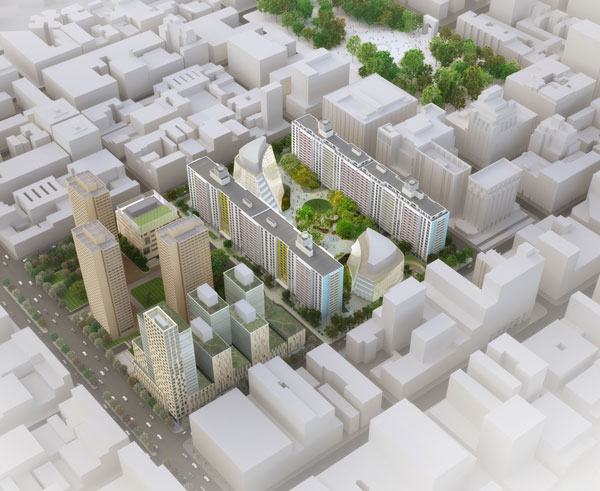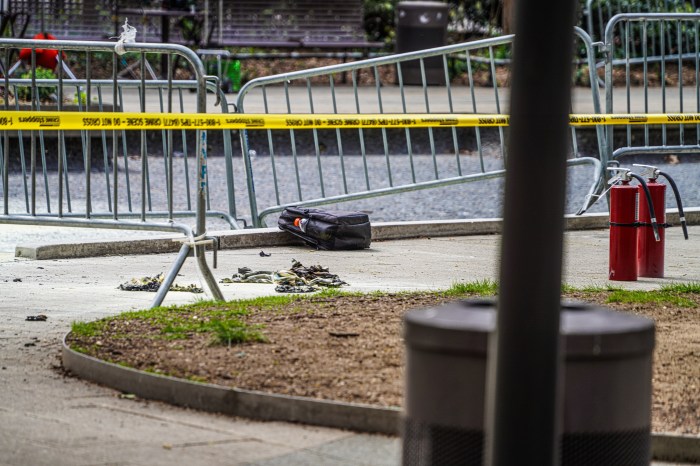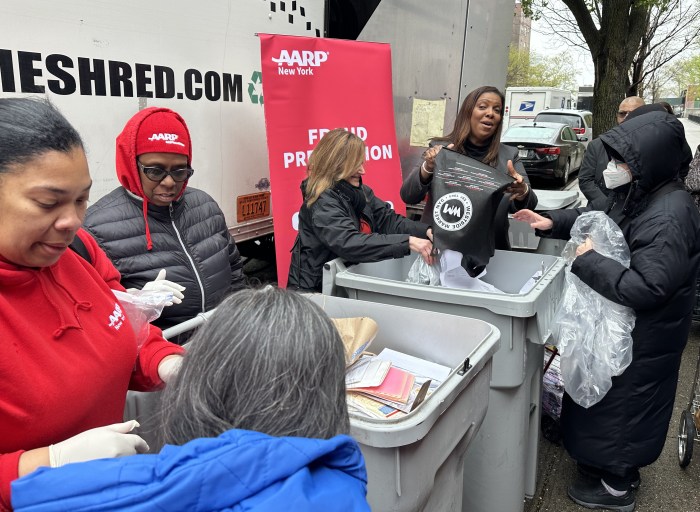
BY LINCOLN ANDERSON | In the wake of the Appellate Court’s overturning a lower court’s decision on the “N.Y.U. 2031” mega-development plan, The Villager sounded out local politicians on their opinion on the latest ruling.
Most of them blasted the decision and called it disappointing, and said they support an appeal.
But, in a one-sentence response, City Councilmember Margaret Chin — who represents the proposed project site — had nothing bad to say about the Oct. 14 ruling, and in fact, said it represents a move in the right direction.
In January, a broad coalition of community plaintiffs — including N.Y.U. faculty, the Greenwich Village Society of Historic Preservation, numerous local groups and individuals and Assemblymember Deborah Glick — won a stunning victory in the case in State Supreme Court. Following last week’s setback at the Appellate Division, however, they said they now intend to appeal to the state’s highest court, the Court of Appeals.
Back in January, most local politicians had strongly praised Justice Donna Mills’s ruling, in which she determined that three of four of the disputed open-space strips on the eastern and western edges of New York University’s South Village superblocks are parkland — albeit “impliedly” so — even though they are still technically under Department of Transportation jurisdiction.
At that time, the pols, in a post-ruling rally at G.V.S.H.P.’s East Village office, had called for N.Y.U. to “come back to the table” and completely redesign its massive plan from square one — but N.Y.U., as well as the de Blasio administration, subsequently appealed Mills’s ruling.
Glick, as reported in last week’s newspaper, in a statement after the ruling, said, in part, “The ‘N.Y.U. 2031’ plan disregarded the law when it came to the ‘alienation’ of parkland and will result in the razing of public green space that is essential for the community. … We will continue to press forward and appeal this ruling and look to the higher court to protect green space that has for decades been used by the community.”
Congressmember Jerrold Nadler told The Villager, “I am disappointed with the ruling by the Appellate Division reversing Judge Mills’s ruling from January. These public spaces — which include a children’s playground and open spaces that help make this neighborhood a better place to live — are vitally important to the community. And the fight to preserve them will go on.”
State Senator Brad Hoylman told the newspaper, “I think the Appellate Division erred in determining that the Public Trust Doctrine doesn’t apply to these park strips. While the court recognizes in its perfunctory decision that parkland can be implied, it goes on to say that because the City never [ital] expressly [unital] designated the strips as parks, they’re not protected by state law. With this circular reasoning, it’s hard to conceive of a scenario where these judges would find that implied parkland exists.
“The park strips,” Hoylman continued, “consist of open space with trees, greenery, playgrounds, gates and even official park signage. Sure sounds like a park to me and certainly deserving of state protection. I think this decision runs counter to the law, public policy and frankly, old-fashioned common sense.
“I’m heartened by the fact that the plaintiffs have already stated they are preparing a further appeal,” Hoylman said.
Under the Public Trust Doctrine, the state Legislature first must “alienate” public parkland before it can be removed from park use — such as for use as a construction staging area or for part of the footprint of N.Y.U.’s new “Zipper Building,” which the university wants to build on its Coles gym site on Mercer St.
Borough President Gale Brewer said, “While the court decision is clearly a setback for those of us concerned about preserving open space in our city, it’s not the end of the line.”
State Senator Daniel Squadron told The Villager, “The Appeals Court decision is disappointing, especially since the community’s argument is not built on vague wishes but includes a very specific history, as [Henry Stern] the former Parks commissioner and others have made clear. The fact is, an accurate, full and fair assessment of the impact of new development is a crucial part of community planning. As my colleagues and the community have said, a reassessment of the plan should follow an inclusive process that appropriately accounts for all open space, as well as other priorities.”
Regarding Squadron’s referring to a “reassessment,” the Appellate panel denied the plaintiffs’ appeal calling for a do-over of the seven-month-long Uniform Land Use Review Procedure — the city review process for such a project.
City Councilmember Corey Johnson said, “The Appellate Court’s recent decision is unfortunate and wrong for the community. It is clear that the ‘N.Y.U. 2031’ plan is a land grab and the proposed buildings will further reduce an already limited amount of green space in the Village.
“New York has a process by which public land is ‘alienated’ for private use, and N.Y.U. has willfully ignored that process to expand its footprint in low-slung Greenwich Village,” Johnson said. “When a piece of land looks like a park, is used like a park, and has all the features of a park, then indeed, it is a park. I support the community plaintiffs and Assemblymember Glick’s decision to appeal this ruling to the Court of Appeals.”
As for Chin, she issued a terse statement to The Villager on Monday basically indicating that, well, last week’s Appellate Division ruling was all good.
“We’re now one step closer to seeing these strips mapped as parkland under the plan negotiated and approved by the City Council in 2012,” she said. She said nothing about the community plaintiffs’ planned appeal.
Chin’s statement came with an attachment of a section of the ULURP application for the massive, nearly 2-million-square-foot project — approved by the City Council in July 2012 — that calls for portions of the strips eventually to become permanent parkland after the N.Y.U. project is completed.
The section of the ULURP specifically refers to “a City Map Change to narrow, through elimination, discontinuance, and closure, various segments of Mercer Street and LaGuardia Place to enable property disposition to New York University and to establish parkland.”
Back in January, Councilmember Rosie Mendez had questioned Mills’s ruling deeming the LaGuardia Garden parkland. When the full City Council O.K.’d the N.Y.U. project two years ago, Mendez said it was a very tough decision for her to vote “yes,” but that Chin was her “sister.”
On Wednesday, Mendez indicated she’s still not ready to call all four of the disputed strips parkland.
“From some of the things that I saw, I think certain areas could be parks because there had been things done by the Parks Department for many years,” Mendez said. “I don’t think it applied to all sections, but on some of them, they made a good argument. There were degrees, different levels, and some things to me were more convincing than others. But, at the end of the day, the plan put forward by Margaret and approved by the City Council was that, down the road, this would become parkland.”
Yes, Mendez said, she understands that some in the community want the strips declared parkland right now to stop the N.Y.U. project.
“We’re not guaranteed they could win an appeal,” she added of the community plaintiffs.

















